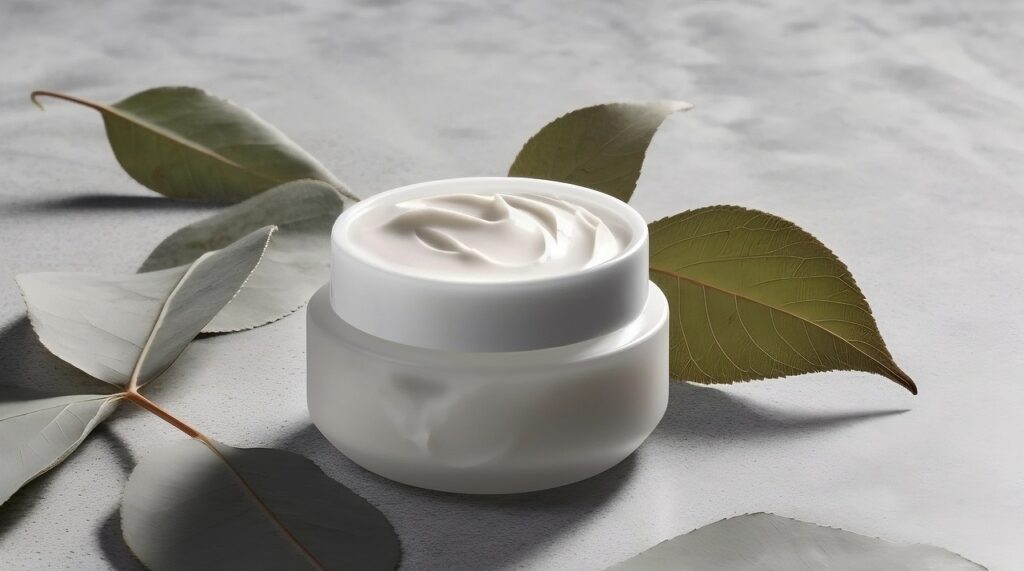Today, we’re talking about an unexpected hero in the battle against a skin condition that goes by the perplexing name of Disseminated Superficial Actinic Porokeratosis (DSAP). Our unlikely champion? Cholesterol-lowering medication, lovastatin!
Let’s delve into the details of DSAP to better understand this condition.
What is it?
- Small, round, raised lesions on the skin and development of small, brownish/reddish, slightly scaly papules (cornoid lamellae).
- Compacted skin cells (keratinocytes) on the top layer of the skin (epidermis).
- Not hereditary
- Triggered by exposure to UV radiation over time
- Common in fair-skinned people
- Appear on sun-exposed areas, such as the arms, legs, and the face
- There is currently no cure for DSAP
Living with DSAP
“DSAP is a skin condition that often leaves people scratching their heads, quite literally.”
There is no cure for DSAP, and its management is primarily focused on symptom relief and preventing the progression of the condition.
Several treatment options are available, but effectiveness varies from person to person.
These include:
- Topical Treatments: Creams or ointments containing retinoids, such as tretinoin. These can help to reduce the thickening of the skin and minimise the appearance of DSAP lesions.
- Cryotherapy: Cryotherapy involves freezing the affected skin with liquid nitrogen, which can help to remove some of the lesions.
- Laser Therapy: Fractional laser therapy can be used to improve the appearance of DSAP lesions, although multiple sessions may be required.
- Oral Retinoids: In some cases, oral retinoids like acitretin may be prescribed to manage the condition, but they come with potential side effects and require close monitoring.
- Topical Cholesterol and Lovastatin cream
- Sun Protection: One of the most crucial aspects of managing DSAP is sun protection. Individuals with DSAP should use sunscreen with a high SPF and avoid excessive sun exposure to prevent the condition from worsening.
Managing DSAP
- Work closely with your dermatologist to develop an individualised treatment plan
- Maintain regular skin check-ups
- Diligent sun protection preferably with a physical SPF (containing zinc and/or titanium dioxide).
- Use cholesterol-rich moisturisers
The Low down on Lovastatin (and cholesterol!)
Researchers suspect DSAP might be linked to our cholesterol metabolism. The exact details are still being worked out, but they have a hunch that your skin might just benefit from a cholesterol-lowering superhero drug like lovastatin.
Lovastatin is a member of the statin family, an elite squad of medications used to lower cholesterol levels in the blood.
It’s properties include:
- Anti-Inflammatory: It’s also an anti-inflammatory wonder drug. Inflammation is like the villain in many skin conditions, and lovastatin’s anti-inflammatory properties can help calm the skin, giving you some relief from the itchiness that DSAP can bring.
- Keratinocyte Kicker: DSAP is all about those pesky keratinocytes, the cells responsible for your skin’s thickness.
- It slows down proliferation, which means it could help flatten raised, scaly lesions that DSAP loves to create.
- Skin Beauty Booster: While the primary goal of treating DSAP is to reduce discomfort and itchiness, some patients have reported a bonus effect – an improvement in their skin’s appearance. Now, who wouldn’t want that?!
- Sun-Defying Shield: DSAP seems to have a love-hate relationship with the sun. Lovastatin’s cholesterol-reducing powers can help protect your skin from the sun’s harmful UV rays, preventing further damage and potential flare-ups.
Cholesterol:
- Repairing the Barrier: Cholesterol helps in repairing and strengthening the skin’s protective barrier. By maintaining this barrier, cholesterol helps reduce the risk of inflammation and infection.
- Moisture Retention: Cholesterol also plays a role in retaining moisture in the skin
But wait!
Before you rush to your nearest pharmacy to snag some lovastatin, there are a few things you should know:
- Always talk to your dermatologist or healthcare provider before embarking on any treatment, even one as cool as this. They’ll help you figure out if lovastatin is the right choice for you.
- Lovastatin can have some side effects, such as muscle pain and potential liver issues. Regular check-ups are crucial to monitor your progress and well-being.
- It’s not a Magic Pill. In fact, it’s not a pill at all! Lovastatin is not officially approved for DSAP treatment. For it to work, it needs to be applied topically and be formulated by a compounding pharmacy into a Cholesterol Lovastatin Cream.
- Results can vary and it may take time to see improvements.
- Remember, there is no cure for DSAP but a proper maintenance and management plan has been shown to be extremely effective for those suffering with this condition.
Wishing you a happy and healthy skin adventure!

Lane Khin, the compounding pharmacist of My Skin Pharmacy, brings a wealth of knowledge from the worlds of pharmacy and dermatology to the table. With degrees in Pharmacy and Applied Science from QUT, Lane combines a deep understanding of compounding and skincare with a friendly, accessible approach. Through My Skin Magazine, Lane shares her expertise, offering readers practical advice and insights into personalised skincare solutions. Lane has a real passion for helping others achieve their best skin.

